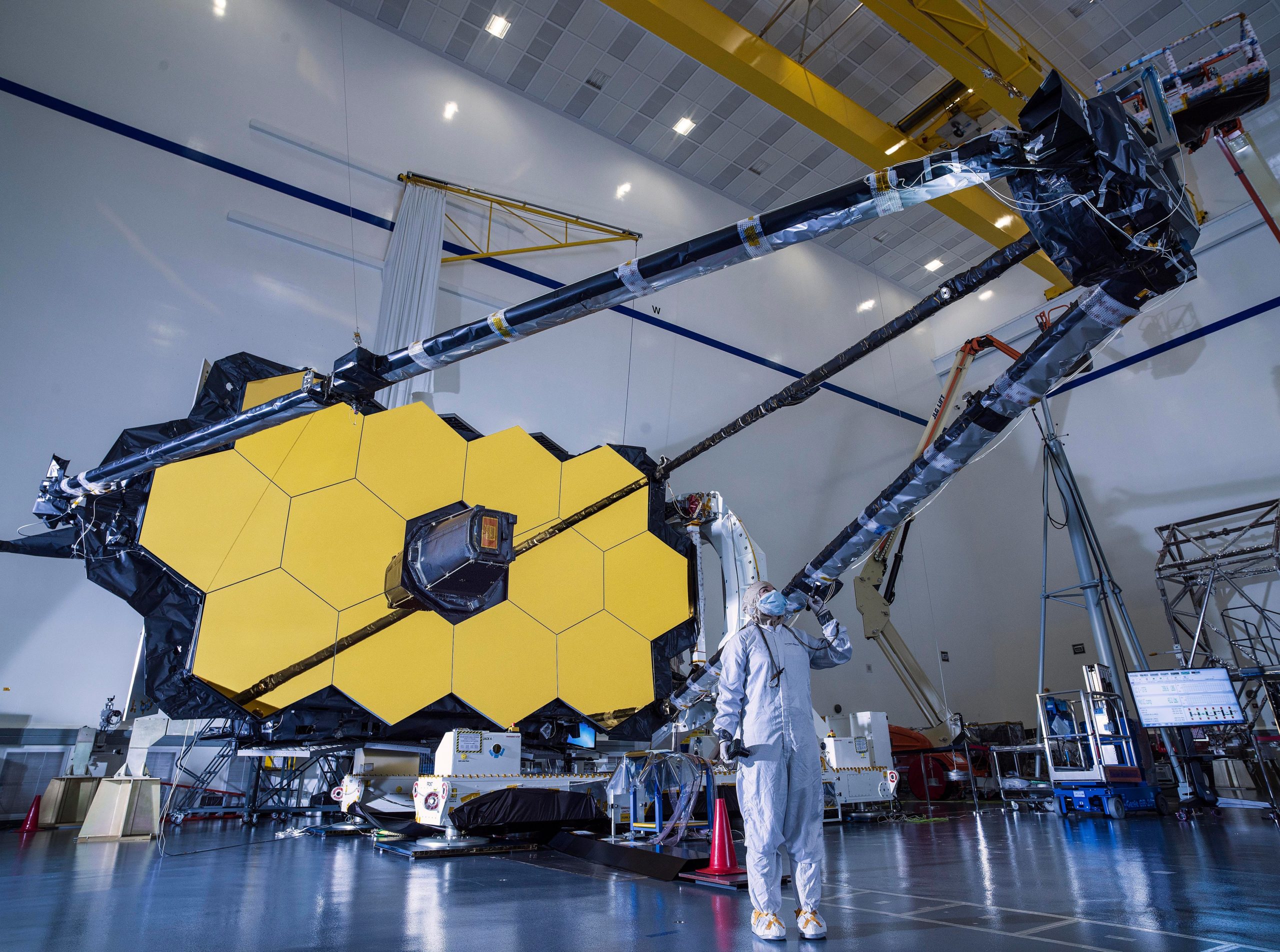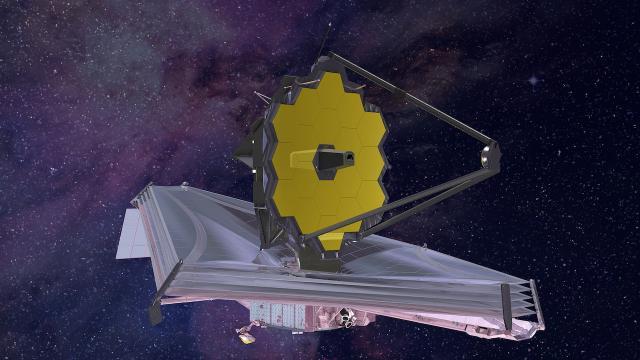The James Webb Space Telescope has successfully deployed the tripod that holds the observatory’s secondary mirror, in what is a critical milestone for the mission.
Webb launched on Christmas Day, but a lot has already happened, including the successful deployments of the observatory’s solar array and five-layer sunshield, the latter of which was completed just yesterday. Today, the Webb team shifted its focus to the secondary mirror, in what is the first in a series of deployments having to do with Webb’s optics.
The secondary mirror, measuring 0.77 metres wide, is located on the tips of three long booms and is one of the most important components of the $14 billion observatory.
Webb is a three mirror anastigmat telescope consisting of the large 6.49 m-wide primary mirror, the secondary mirror, and a tertiary mirror. The primary mirror, using its 18 gold-plated segments, will collect incoming light from distant stars, galaxies, and exoplanets, and then reflect a focused beam to the secondary mirror. The beam will then bounce back toward the primary mirror and enter into the tertiary and fine steering mirrors. There, the precious light will finally reach the four scientific instruments situated behind the primary mirror.

Today’s deployment of the secondary reflector tripod began at 2:40 a.m. AEDT. The first step was to release a series of launch locks that prevented the folded-up telescope from getting damaged during launch. Following a quick confidence check, the controllers sent a command for the tripod to make a single small move, which happened at 3:08 a.m. Happy with the result, controllers then issued a command to make the full move — the release of the secondary support structure.
A data-driven, real-time animated view of the telescope shown in NASA’s live webcast of the deployment depicted the tripod slowly shifting into position. The two bottom legs moved into place, while the upper leg, with its one hinge, unfolded as expected. The support structure reached its fully extended position at 3:20 a.m. EST, some 11 minutes after the full move command was issued. Controllers then latched the secondary mirror into place, in a process that lasted for 45 minutes.

The successful unfolding of the secondary reflector tripod sets the stage for the next step: testing the mirror to make sure it moves on command. Assuming that goes well, the team will then unfold and latch the two primary mirror wings. While all this is happening, the telescope, along with its scientific instruments, will undergo rapid cooling now that the sunshield is in place. NASA says it should take several weeks for Webb to reach stable temperatures.
The observatory is currently en route to its destination, Lagrange point 2, which is located approximately 1.5 million kilometres from Earth. Science operations should begin in around six months, at which time the infrared telescope will gather light from the first galaxies and stars to appear in the universe.
